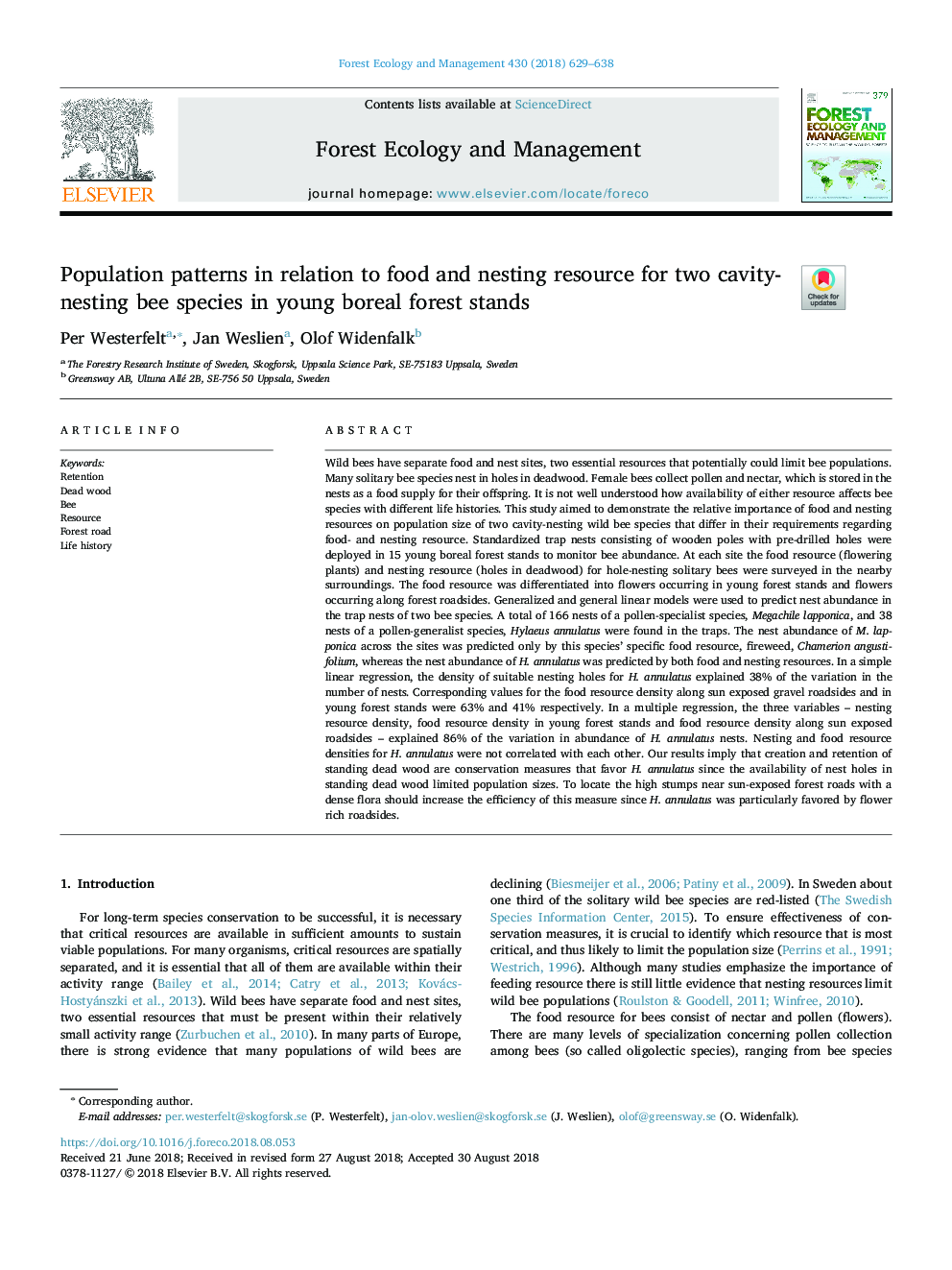| کد مقاله | کد نشریه | سال انتشار | مقاله انگلیسی | نسخه تمام متن |
|---|---|---|---|---|
| 11000057 | 1421330 | 2018 | 10 صفحه PDF | دانلود رایگان |
عنوان انگلیسی مقاله ISI
Population patterns in relation to food and nesting resource for two cavity-nesting bee species in young boreal forest stands
ترجمه فارسی عنوان
الگوهای جمعیتی در ارتباط با منابع غذائی و لانه سازی برای دو گونه زنبور عاری از حفره در گیاهان جنگلی جوان بومی
دانلود مقاله + سفارش ترجمه
دانلود مقاله ISI انگلیسی
رایگان برای ایرانیان
کلمات کلیدی
نگهداری، چوب مرده، زنبور عسل، منبع، جاده جنگل، تاریخ زندگی،
موضوعات مرتبط
علوم زیستی و بیوفناوری
علوم کشاورزی و بیولوژیک
بوم شناسی، تکامل، رفتار و سامانه شناسی
چکیده انگلیسی
Wild bees have separate food and nest sites, two essential resources that potentially could limit bee populations. Many solitary bee species nest in holes in deadwood. Female bees collect pollen and nectar, which is stored in the nests as a food supply for their offspring. It is not well understood how availability of either resource affects bee species with different life histories. This study aimed to demonstrate the relative importance of food and nesting resources on population size of two cavity-nesting wild bee species that differ in their requirements regarding food- and nesting resource. Standardized trap nests consisting of wooden poles with pre-drilled holes were deployed in 15 young boreal forest stands to monitor bee abundance. At each site the food resource (flowering plants) and nesting resource (holes in deadwood) for hole-nesting solitary bees were surveyed in the nearby surroundings. The food resource was differentiated into flowers occurring in young forest stands and flowers occurring along forest roadsides. Generalized and general linear models were used to predict nest abundance in the trap nests of two bee species. A total of 166 nests of a pollen-specialist species, Megachile lapponica, and 38 nests of a pollen-generalist species, Hylaeus annulatus were found in the traps. The nest abundance of M. lapponica across the sites was predicted only by this species' specific food resource, fireweed, Chamerion angustifolium, whereas the nest abundance of H. annulatus was predicted by both food and nesting resources. In a simple linear regression, the density of suitable nesting holes for H. annulatus explained 38% of the variation in the number of nests. Corresponding values for the food resource density along sun exposed gravel roadsides and in young forest stands were 63% and 41% respectively. In a multiple regression, the three variables - nesting resource density, food resource density in young forest stands and food resource density along sun exposed roadsides - explained 86% of the variation in abundance of H. annulatus nests. Nesting and food resource densities for H. annulatus were not correlated with each other. Our results imply that creation and retention of standing dead wood are conservation measures that favor H. annulatus since the availability of nest holes in standing dead wood limited population sizes. To locate the high stumps near sun-exposed forest roads with a dense flora should increase the efficiency of this measure since H. annulatus was particularly favored by flower rich roadsides.
ناشر
Database: Elsevier - ScienceDirect (ساینس دایرکت)
Journal: Forest Ecology and Management - Volume 430, 15 December 2018, Pages 629-638
Journal: Forest Ecology and Management - Volume 430, 15 December 2018, Pages 629-638
نویسندگان
Per Westerfelt, Jan Weslien, Olof Widenfalk,
